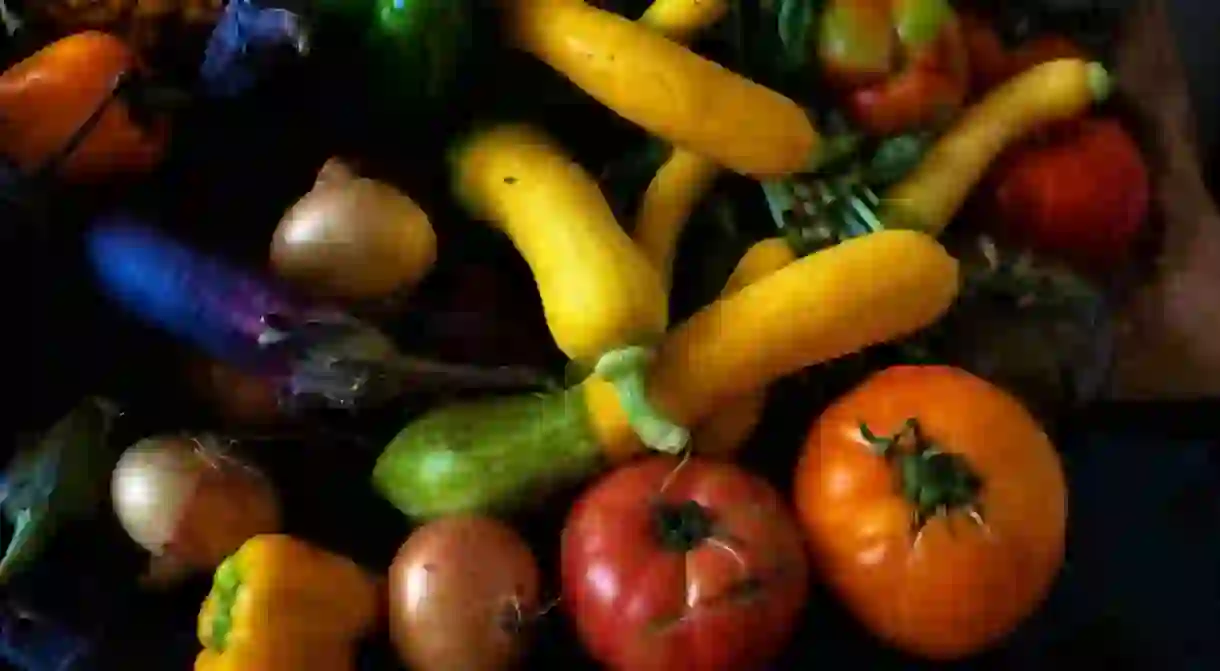Dishes You Have to Try From the South of France

The heady mix of the sun and sea make the local produce in the south of France irresistible. Aside from ratatouille, which the region is famous for, there are other less well-known delights, many of them based around fish or olives.
Soupe au Pistou (Pistou Soup)
Pistou is the Provençal answer to the more common Italian pesto. Pesto is made with garlic, basil, pecorino cheese and pine nuts, which are ground together to form a paste that is then added to pasta or sandwiches. The Provençal pistou is similar but doesn’t have the pine nuts. It is added to soup made with white beans, green beans and tomatoes. For purists, it is a summer soup, traditionally eaten in July and August, when all the ingredients can be found fresh, in season and with the most flavour.

Pieds Paquets
Pieds means ‘feet’ in French, and this recipe means ‘packets of feet’, usually lamb. The sheep’s feet are put in the bottom of a pan (after they’ve been cleaned and de-haired) and then some tripe is added, wrapped in little packets with herbs and spices. Everything is then stewed in a white-wine sauce. Many people add carrots.
Socca
Market, Restaurant, French, Italian

Gateau des Rois
The gateau des Rois (‘cake of kings’) is commonly eaten in many Christian countries to celebrate the end of the Christmas season or Epiphany. It is normally made out of puff pastry and frangipane, but in Provence it is made from brioche and candied fruit. Every year after the 12th day of Christmas and before Pancake Day (Shrove Tuesday), friends and families in Provence have a gateau des Rois for dessert. A plastic figurine of the baby Jesus is hidden inside and whoever finds it inside their piece of cake is named king or queen for the evening. These days, beans are sometimes used instead, offering good luck to whomever finds them.

Daube Provençale
For carnivores, Daube Provençale is probably the best dish to try. It’s a local beef stew cooked in a daubière, which is a heavy casserole pot. Some of the best restaurants cook their Daube overnight, but the minimum is a few hours, and very slowly. In Provence, the stew has lots of anchovy paste and red wine.
Salade Niçoise
Salade Niçoise is one of France’s best culinary exports and is known around the world. Different chefs prepare it in different ways, but it should always contain black olives, anchovies, long green beans, tomatoes, hard-boiled eggs and lettuce.

Pan Bagnat
The Pan Bagnat is a sandwich that is very common in Nice and the surrounding area. Its name means ‘wet bread’, because it’s a way to liven up old bread. It is made using a wheat bread called pain de Campagne that has a circular shape. The ingredients of a Salade Niçoise are added, with balsamic vinegar, to make Pan Bagnat.

Bouillabaisse
Bouillabaisse is a local fish stew that originated in Marseille. It is cooked in a variety of ways in kitchens around the globe, but in Marseille it should always contain three kinds of fish: rockfish, sea robin and European conger. When fishermen couldn’t sell the bony rockfish (rascasse) that they caught, they started making a fish stew to use them up. It’s a delicacy nowadays, and should ideally be prepared ahead of time, which is why the best restaurants like you to order it one or two days in advance.

Fougasse
Fougasse is a flatbread. Variations can be found across France, originating from Roman times. In Provence, fougasse is normally made with olives and anchovies, and is sometimes topped with cheese as a handy snack.

Tarte Tropézienne
The Tarte Tropézienne is a dessert that originated in St Tropez in the 1950s. A Polish baker, Alexandre Micka, started making a dessert based on the French brioche and his Polish grandmother’s cake recipe. He was catering for Brigitte Bardot’s breakout movie, And God Created Woman, when he asked Bardot to taste it. She loved it and gave it its name, and he went on to open his first bakery in town. Today, the Tarte Tropézienne is a chain across southern France and the dessert is one of the region’s most loved and bought.

Tapenade
When the southern French have an apéritif, they will often bring out a tapenade to go with their local rosé wine. Tapenade is a spread made from olives, usually with capers, that is spread on large croutons.

Calissons
Calissons are a sugary sweet that come from the town of Aix-en-Provence. They are made from sweet almonds, which are ground to a paste and mixed with candied local melon and orange peel. The paste is spread onto a wafer and coated in icing.
Pissaladière
Pissala is an anchovy paste from the region that is used on mini pizzas called pissaladières. They are very similar to Neapolitan pizza but use a lot less tomato and mozzarella. They normally have added onions and sometimes use different cheeses.














